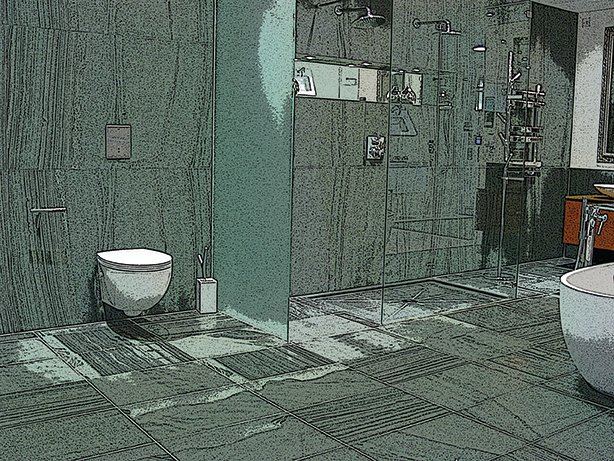The Interiors & Surface Materials focus group is one of the sector specific groups of Stone Federation Great Britain. It includes a wide range of stone companies, including stone suppliers and contractors working in this sector, bringing to bear a wealth of expertise.
Stone Effect vs The Real Deal
The true mark of success of any style, design or brand is to be given the much sought after accolade of achieving longevity. Stone certainly has that. It has been used to construct buildings and decorate their interiors from Mesopotamia to the present day.
Success brings immitation. It’s often part of a desire in businesses to achieve quick success by emulating part of what makes the original unique and benefit from its long-standing reputation. The world of design and materials is no exception.
One of the trends we see in the world of design at the moment is that of ‘stone-effect’ products, particularly ceramic or porcelain tiles.
It is, of course (as the cliché goes) a form of flattery to be immitated. However, there is the danger of misinformation creeping into immitation.
CE Marking legislation enshrines in law the requirement for suppliers to provide their customers with the true and traditional name of the materials they are selling as certain products (such as flooring), not just a marketing name.
It’s this same concept of transparency – of knowing what the product is and what it isn’t – that drives our desire to ensure that customers know that
stone-effect products are just that – an imitation; not the real thing.
Many of the leading stone-effect products take advantage of the aesthetics of popular marbles, granites and slates, using prints and textures that give an appearance of a natural material.
So what does natural stone offer the customer?
Texture. From the fossils found in limestone to the natural, subtle layers of slate, texture is a strong selling point for using natural stone in interior spaces.
The three-dimensional dynamic that a feature wall of unpolished, naturally textured stone can provide is stunning and definitely a trend that is on the increase. And stone can be finished in various ways to provide a texture best suited to the application.
Impact. The geological striations and natural colour streaks found in stones such as marble, quartzites and some granites creates a striking aesthetic that is used across the interiors world, from feature wall linings to floors and countertops. In a market where individuality is key, the truly unique visuals that natural stone offers are striking. No two pieces of stone can be identical, so each brings its individual identity to interior spaces of all descriptions.
Durability. The heat and pressure of the whole planet folding, twisting, churning, combining, melting, cooling in processes of vulcanism and tectonics over geological time are nature’s alchemy producing minerals that still stand as a testament to man’s earliest empires. The fact that we know anything about them at all is because their history is recorded in the stones that still stand.
But you don’t have to go to distant lands to witness the resilience of stone. Just explore the centuries old limestone buildings of London, granite paved streets of Aberdeen or the Clipsham rich architecture of Oxford to see evidence of the longevity of this natural material.
This resilience is also where natural stone holds its own in terms of value. While some
stone-effect materials might be cheaper to buy, they might not work out cheaper as the years go by. When the costing is based on price per year and on-going maintenance rather than any current fashion, the scales might tip in stone’s favour.
The question is simple: why settle for an imitation when the real deal has so much to offer in both design potential and value for money?

